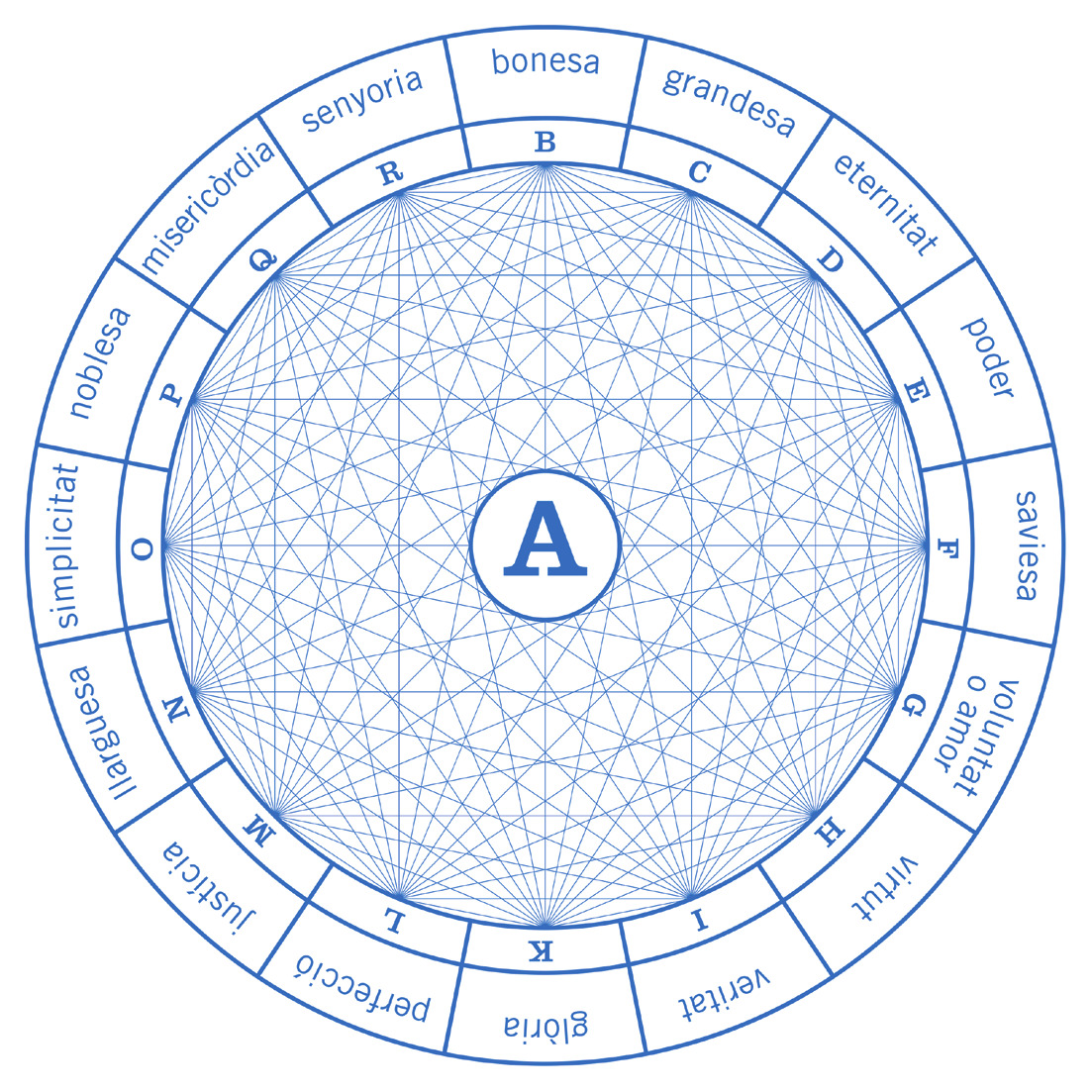- Introduction
- Context
- Life
- Thought
-
Works
- The multilingual nature of Llull's works
- Llull and the catalan language
- Diffusion and preservation
- Book of Contemplation
- Book of the Gentile
- Book of the Order of Chivalry
- Doctrina pueril
- Romance of Evast and Blaquerna
- Book of the Lover and the Beloved
- Ars demonstrativa
- Felix or the Book of Wonders
- Book of the Beasts
- Desconhort
- Tree of Science
- Exemplary Tree
- Cant de Ramon
- Rhetorica nova
- Logica nova
- Liber de fine
- Ars brevis
- Phantasticus
- Ars brevis praedicationis
- Gallery of images
- Database / Dictionary
The Art
The Art began as a method for the conversion of non-believers. Llull had observed that traditional methods based on the authority of sacred texts were useless. They inevitably broke down into endless discussions on how to interpret those texts, discussions which not only persuaded no one, but allowed each disputant to go away convinced that his interpretation was the only one possible. Llull decided to replace these pointless hermeneutic jousts with a system based on general principles acceptable to the three religions. Each, for instance, could agree on the existence of one God, who was necessarily good, great, eternal, etc., and who possessed these qualities to a maximal degree. Each could also accept the physical world of Greek science, as well as the conceptual framework of Aristotelian logic and metaphysics. He therefore formulated a method for combining these and other generally acceptable concepts to show which combinations were, for instance, concordant with or contrary to one another. This method involved a combinatory technique capable of generating arguments either confirming or disproving an original supposition (or, in the latter case, disproving its negation, thereby confirming its truth). The supposition to be tested could be an Article of Faith, any other point of doctrine, or even a question having to do with philosophy, medicine, law, or any other field of contemporary knowledge. Such a method not only had more general applications, but, as Llull soon realized, its very generality would make it more convincing, in addition to ensnaring his opponents into assenting to seemingly inocuous considerations behind which lurked unsuspected doctrinal implications.
The Art went through two phases, the quaternary and ternary, named after the fact that the majority of basic components were respectively in multiples of four or three. In the quaternary phase, Llull’s arguments were based on typical neo-Platonic comparisons, in which goodness, greatness, virtue, etc. were concordant with being, and their contraries with non-being or privation. This comparative technique could be extended to analogies between the different levels of being, as well as to the exempla of Llull’s narrative works, most of which date from this period. In the ternary phase his arguments were based on definitions such as ‘Goodness is that by reason of which good does good’, and ‘Greatness is that by reason of which goodness, duration, etc. are great’. These seemingly tautological definitions in fact corresponded to a dynamic reality in which what a thing did was almost more important than what it was, a dynamism that was articulated through Llull’s correlative doctrine. These definitions were, moreover, univocal, in that they could be applied indifferently to the divine or the created worlds. Llull’s combinatorics could now be applied to create arguments by ‘mixing’ these definitions one with another.
